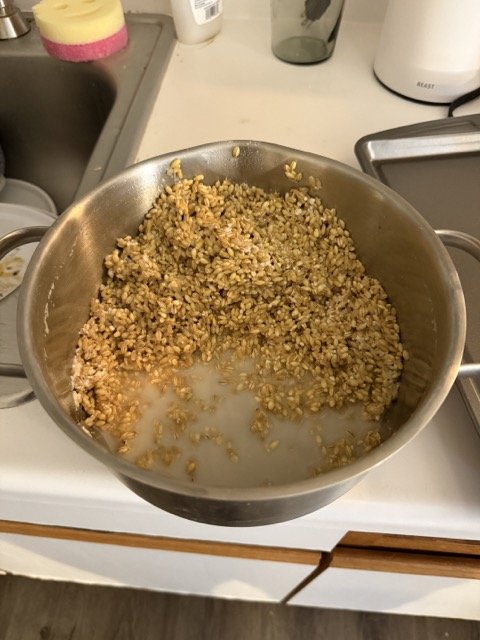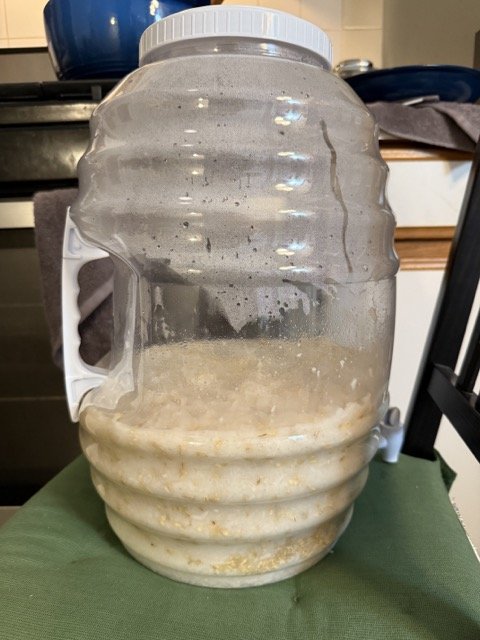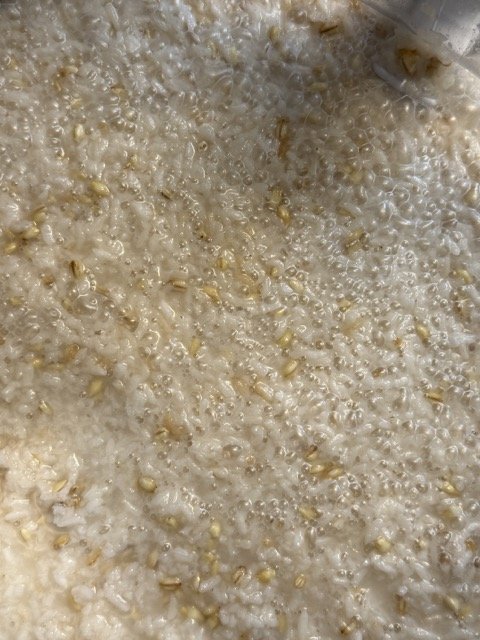Chinese Rice Wine from the Qimin Yaoshu
Introduction
The Qimin Yaoshu is an encyclopedia written by Jia Sixie during China’s Northern Wei Dynasty (c. 540 CE). The title translates to “Essential Techniques for the Welfare of the People,” and it is made up of 10 volumes and 92 chapters of technical information about agriculture and 280 culinary recipes. He uses a “plain, precise technical language…rooted in the vernacular,” which keeps recipes short and straight to the point. It also quotes almost 200 other ancient sources and was widely distributed throughout China and overseas. In fact, in the late 19th century, Charles Darwin cited Qimin Yaoshu in the famous On The Origin of Species, referring to it as “an ancient Chinese encyclopedia.”
I am in the process of reworking a rice wine recipe titled “Method for Brewing Melon-Pickle Wine,” from Volume 8 of the Qimin Yaoshu.
Recipe:
秫稻米一石: One shi (石, ancient volume unit) of glutinous rice.
麥麴成剉隆隆二斗: Two dou (斗, ancient volume unit) of wheat qu (麴, fermentation starter/mold), coarsely chopped.
女麴成剉平一斗: One dou (斗, ancient volume unit) of "female" qu (麴, fermentation starter/mold), finely chopped.
釀法湏消化: The brewing method must involve thorough fermentation.
復以五升米酘之: Add five sheng (升, ancient volume unit) of rice again.
消化復以五升米酘之: Ferment, then add another five sheng (升, ancient volume unit) of rice again.
再酘酒熟則用: Ferment again. When the wine is ready, use it.
不迮出𤓰鹽揩: Do not rush to take it out. Use salt to rub the gourd.
日中曝令皺鹽和暴糟中: Expose it to the sun to let it wrinkle; mix the salt with the leftover mash.
停三宿度內女麴酒中為佳: Let it sit for three nights; adding "female" qu to the wine within this period is best.
Questions:
What do Jia’s extremely brief, yet technical, instructions demonstrate about winemaking culture in China during this time?
How might a modern audience struggle to follow the recipe compared to Jia’s audience in China during the Northern Wei period?
Ingredients: Sweet Rice, Barley (wheat qu), Dried Yeast (female qu), Sorghum (for backup)
Yeast and Barley
Fermentation Starter: Yeast, Barley, and Water
Everything mixed together
Stirring after two days
Obstacles:
One very important piece of information Jia left out of this recipe was the fermentation process for this wine. He simply tells the reader to ferment it, add more rice, and then ferment it again. What should the winemaker look for to know when the wine is done fermenting? Is there an approximate number of days for which to ferment it?
The ingredients were confusing because the only thing I knew about wheat qu and female qu was that they were yeast types.
The recipe also calls for 1 shi of rice, which is equal to about 100 liters. I used 2.8 liters of rice, which is still a large amount and quite heavy to carry. It also took time for me to convert all of the measurements into smaller quantities.
Works Cited:
Bray, Francesca. “Thinking with Diagrams: The Chaîne Opératoire and the Transmission of Technical Knowledge in Chinese Agricultural Texts.” East Asian Science, Technology and Society, vol. 14, no. 2, 2020, pp. 199–223, https://doi.org/10.1215/18752160-8538106.
Jia, Sixie. Qimin Yaoshu. Translated by Donald Sturgeon, Chinese Text Project, ctext.org/wiki.pl?if=en&chapter=75594. Accessed 2 Apr. 2025.
Li, Hua and Hua Wang. Overview of Wine in China. EDP Sciences & Science Press, 2022. EBSCOhost, search.ebscohost.com/login.aspx?direct=true&db=e000xna&AN=3555258&site=ehost-live&scope=site.
A Chinese renaissance. Nature Plants 3, 17006 (2017). https://doi.org/10.1038/nplants.2017.6






